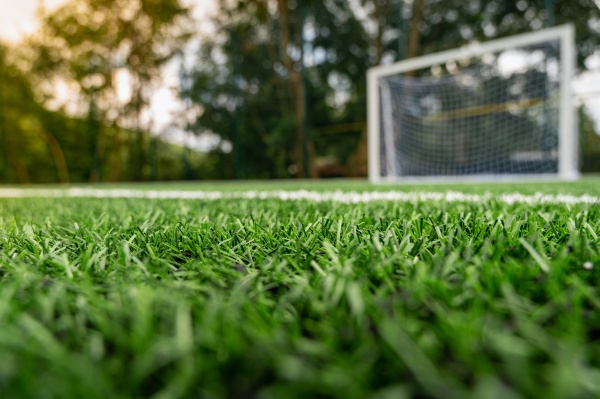Inspect First - Then Refurbish
In recent years, the number of artificial pitches used to practise sports has continued to increase, largely replacing old surfaces such as ...


YOUR FORUM FOR PLAY, SPORTS UND LEISURE AREAS

Finding the right type of sports surfacing is a frequent subject of discussion. In the case of football pitches, the only question in recent years has been whether to use natural turf or synthetic turf. Often, the latter option was chosen because it offered the advantages of longer playing hours, less maintenance and greater weather resistance.
Recently, however, synthetic turf has come under a bit of criticism (cf. S+L 05/2022). Nevertheless, synthetic turf is still the only option on many sports fields – mainly because of the heavy use and because most athletes no longer accept other alternative surfaces such as cinder. Synthetic turf manufacturers have also greatly improved their products in recent years in terms of environmental, climate and sustainability criteria.
It is nonetheless clear that new demands will also be placed on artificial turf pitches in the future. The political requirements with regard to environmental and climate protection will become even more stringent, making it necessary for artificial turf pitches to become more sustainable and minimise emissions. Yet the surroundings of sports fields and the athletes' wishes also continue to play a role. The future holds major challenges. Some of them should be highlighted in the following:
Microplastics: The use of granular infill material on artificial turf pitches is being phased out within EU countries and many alternative solutions are now on the market. However, this does not mean that the debate on the issue of microplastics is over yet. What about mechanical abrasion during use, for example? This issue will also be considered in the future. The goal must be to have a pitch that is as free as possible from any microplastic emission.
Recycling: For a long time, worn-out artificial turf systems were either incinerated after being dismantled or they ended up in landfills. However, that is gradually changing. Almost all manufacturers and independent companies now offer recycling of artificial turf systems. In most cases, however, the old synthetic turf fibres are not turned into new synthetic turf fibres, but into other products, e.g. base material. Whilst this is certainly a positive development, it is not yet a complete cycle. Even though there are individual companies that produce new synthetic turf fibres containing recycled material, an artificial sports turf that consists of almost 100% recycled synthetic turf is not yet on the market. This is a goal that should be achieved at some point in the future.
Weather resistance: It is not by chance that the requirements regarding environmental and climate friendliness are very stringent. We are all feeling the impacts of climate change. We will be faced with higher temperatures and ever more extreme weather events such as heavy rainfall etc. Artificial turf pitches must also be adapted to these changes. Solar radiation in particular often takes its toll on the fibres. Ideally, durability should even increase, which means that more robust and weather-resistant fibres will be needed in the future. The drainage system of the pitches should also be designed to cope with large amounts of rainfall. And if the collected water can also be reused, this is certainly an advantage in view of the impending water shortage.
Playing experience: Whilst this aspect should definitely rank behind the other requirements listed – there can be no denying that synthetic turf on sports fields is primarily intended to be used for practising sports. And one should never forget that the original idea of synthetic turf was to replicate the playing qualities of natural turf as closely as possible. Although the development is certainly heading further and further in this direction, the requirements will also increase in this respect. And even when that level is reached, there will still be the question of how to enhance the playing experience even further. The ideal synthetic turf is optimally adapted to meet the athletes’ requirements. And in addition to the playing feel, aspects such as reducing the risk of injuries and being easy on the joints must certainly also be taken into account.
Artificial turf pitches of the future must be able to meet many different requirements. This is a challenge facing both the industry and operators. The products are constantly evolving, as manufacturers are aware of the ever-increasing requirements. There is no way of knowing whether the ideal synthetic turf that meets all requirements 100% will be available at some point in the future. For many future athletes, however, artificial turf pitches will be important facilities where they can engage in physical activity and practise their sports, and that is why it is worthwhile to continue down this path of development.
TT